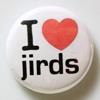

|
|||||
|
Home Fat Sand Rat Links Natural
History Captive
Husbandry To recommend a link please send an email. Fat Sand Rat Breeders To recommend a breeder please send an email. |
Fat
Sand Rat (Psammomys obesus) Article By Dennis Quinter The Fat Sand Rat/Prarie Dog - Rodentia; Genus PSAMMOMYS -(Fat Sand Rat) is new to the U.S. market. The body length is 5"- 7" with a tail length of 4"- 6" with a dark tuft at the end. They are Diurnal (active day and night) and very docile. The gestation period is 25 days with litter size of 3-5. The young wean at three weeks and can breed at 3-4 months of age. Young have been seen year round. In the wild, the Sahara Desert, the main food source is plants from the family Chenopodiaceae. These plants are succulent plants with a high salt content. Most animals could not survive on these plants due to the salt concentration but Fat Sands have special kidneys to handle the job. They also eat Barley and other small seeds. Plants in the U.S. that are similar include Buckwheat, Spinach, Red Beet Greens, Salt Bush, and Sali Cornia. Not much is known about the importance of salt in a captive diet. They will eat Spinach but prefer Romane Lettuce. I sprinkle salt on it just to be safe. They prefer wild bird feed to Gerbil and Hamster foods. Sprays of millet disappear fast. They have eaten raw peanuts and nibbled at Leaf Eater Diet and Zoopreme. They will nibble at apples and eat the seeds out of cucumbers and zuccini. It is difficult to tell which seeds they are eating because the seeds they pick out to eat are so small. I have heard that they like hamburger but I have not used it for fear of canibalism starting. The nickname of Prarie Dog came about because of their appearance. They do look a lot like a small Prarie Dog. They are very docile and not likely to bite when handled. They will usually come to your hand and let you pick them up. If they resist handling, they squirm and wriggle out of your hand without biting. Pairs seem to get along well but males will fight each other in a close area. They like a nest box and like to climb even on bird perches. Potential buyers should be aware. There is a mortality problem which may cured with more animals coming into the U.S.. It is not known if it is from handling, before during or after shipping, or diet. Many have their tails chewed off and others gang up on sick ones.There is also a similar looking animal that may be mixed in with these animals. There has not been, to my knowlege as of now, any domestic litters. These are beautiful little animals and I hope any problems are solved quickly with out too many losses. [This article was written several years ago; new informaion may possibly have developed] |
 Click to join EFExotics  Pins and magnets in the store! Fat
Sand Rat
Images
To submit genet images please send an email.
|
|||